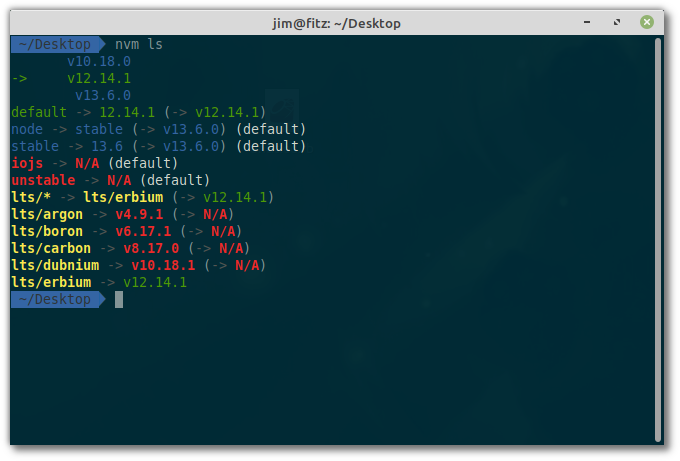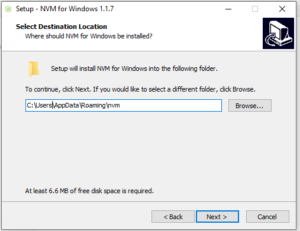
This is confirmation that NVM for Windows is successfully installed. If you did set the user environment variables, you don't need to do anything else. If you chose not to set the user environment variables in step 2, you may need to restart Windows in order for it to recognize NVM in the path.
arch: This should be 32 or 64 based on whether Windows is running as a 32-bit or 64-bit application. If you need to use a proxy, it can be modified using nvm from the command line. path: This is the symlink directory defined in NVM_SYMLINK. root: This is the installation directory where the files were extracted ( NVM_HOME). The example settings.txt contains an example that will work with the latest version. NVM for Windows stores configuration details in a simple text file. Create settings.txt in the installation directory. This can simplify use of nvm in the console without restarting Windows. User Variables: While not explicitly required, these same changes can be applied to the user environment variables as well. It will automatically be created and maintained by NVM.įinally, update the system path by appending %NVM_HOME% %NVM_SYMLINK% to the end. This should be set to the path that will be used to identify which version of node.js is running. Second, add a new environment variable called NVM_SYMLINK. If you used the default, this would be C:\Users\\AppData\Roaming\nvm. This should be set to the directory from step 1. There are two system environment variables that need to be created, and one that needs to be modified.įirst, add a new environment variable called NVM_HOME. Update the system environment variables. The symlink is recreated to point to whichever version of node.js should run. NVM for Windows "switches" versions of node.js by updating a symlink, using the mklink command. This is a critical component for switching between versions of node.js. The "elevate" scripts help elevate administrative permissions for actions that require it. All three of these are required for NVM to function properly. The zip archive contains three files, including nvm.exe, elevate.vbs, and elevate.cmd. The default directory used by the installer is C:\Users\\AppData\Roaming\nvm, but you can use whatever you like. Extract this to the directory where NVM should be "installed". You should also uninstall any existing versions of node.js. If you need to install manually, there is a separate download called nvm-noinstall.zip. 
The file is called nvm-setup.zip, which contains nvm-setup.exe. The easiest way to get started is to use the installer. You can hack on it or build from source if you want to. So you've decided to try out NVM for Windows, or at least learn more about it.

Notice: If you're trying to troubleshoot a problem, see the common issues page.






 0 kommentar(er)
0 kommentar(er)
